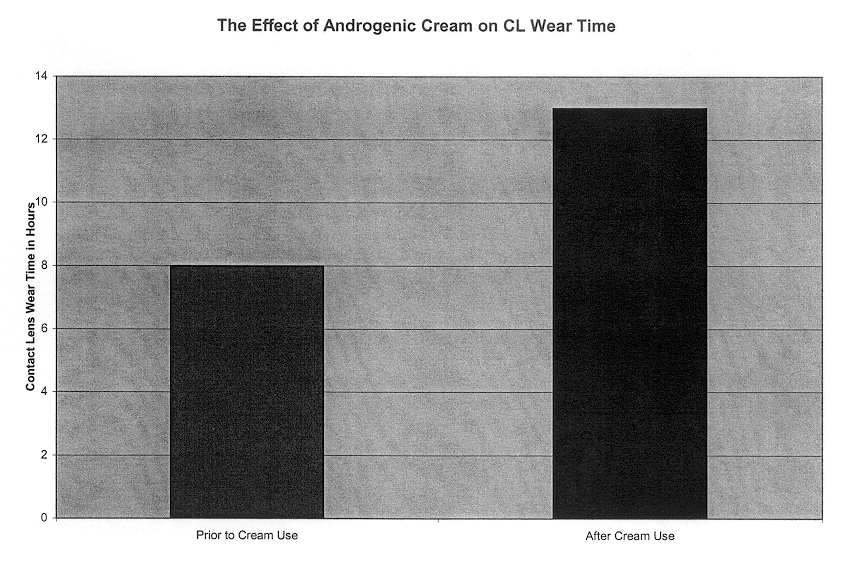Method to use transdermal administration of androgens to the adnexa of the eye
a transdermal androgen technology, applied in the direction of medical preparations, pharmaceutical delivery mechanisms, organic active ingredients, etc., can solve the problems of frequent dosing, limited pharmaceutical treatment of dry eye disease, and short relief, so as to improve the contact lens wear time of the subject, and improve the effect of contact lens wear
- Summary
- Abstract
- Description
- Claims
- Application Information
AI Technical Summary
Benefits of technology
Problems solved by technology
Method used
Image
Examples
example 1
A 49 year old Caucasian female who presented with dry burning eyes and eye strain. A diagnosis of dry eye was established, her tear breakup time (TBUT) was 1 sec right eye (OD) and 2 sec left eye (OS) Schirmer test was 11 mm OD and 5 mm OS. TBUT (tear breakup time) is a less accurate test for dry eye, as it looks at the stability of tear film. A normal TBUT is 10 seconds. This test is influenced by evaporation of the tears as well as tear production. If a patient has a TBUT of less than 10 seconds, they are though to have dry eye, but the dry is not necessarily the result of reduced tear secretion. Schirmer test measures tear production. A normal patient will wet a Schirmer strip 10 mm in 5 minutes. If it is less than 10 mm in 5 minutes, the patient is said to have dry eye. This means the patient does not secrete adequate tears. The patient had 2+ staining with Lissamine green in both eyes. After 2 weeks on a 2.5% by weight testosterone in a facial cream (facial cream, People's Cust...
example 2
A 29 year old Caucasian female who was unable to wear contact lenses with TBUT of 4 sec in each eye and a normal Schirmer test. She found applying 2.5% by weight DHEA in a facial cream (facial cream, People's Custom Rx, Memphis, Tenn.) twice a day to her eyelids increased her contact lens wear time from 2 hours a day to 11 hours a day. She did not show a significant change in TBUT or Schirmer test with the cream. She got relief from the cream within 1 hour of application and said the relief lasted all day. She said the cream reduced her eye ache. She has been using the cream since October 2001. She and friends have commented the cream made her eyes look less puffy.
example 3
A 26 yr old Caucasian female with dry eye symptoms but a normal Schirmer test reported no relief of symptoms but felt her eyelids looked and felt better. She would like to use the 2.5% by weight DHEA in a facial cream (facial cream, People's Custom Rx, Memphis, Tenn.) as a cosmetic.
PUM
| Property | Measurement | Unit |
|---|---|---|
| Percent by mass | aaaaa | aaaaa |
| Weight | aaaaa | aaaaa |
| Time | aaaaa | aaaaa |
Abstract
Description
Claims
Application Information
 Login to View More
Login to View More - R&D
- Intellectual Property
- Life Sciences
- Materials
- Tech Scout
- Unparalleled Data Quality
- Higher Quality Content
- 60% Fewer Hallucinations
Browse by: Latest US Patents, China's latest patents, Technical Efficacy Thesaurus, Application Domain, Technology Topic, Popular Technical Reports.
© 2025 PatSnap. All rights reserved.Legal|Privacy policy|Modern Slavery Act Transparency Statement|Sitemap|About US| Contact US: help@patsnap.com

